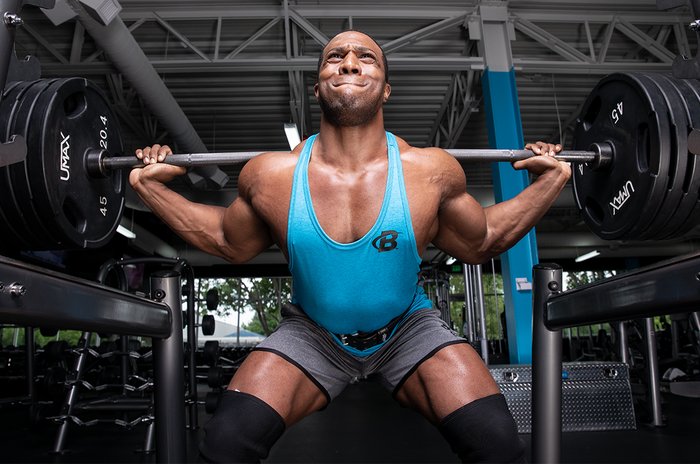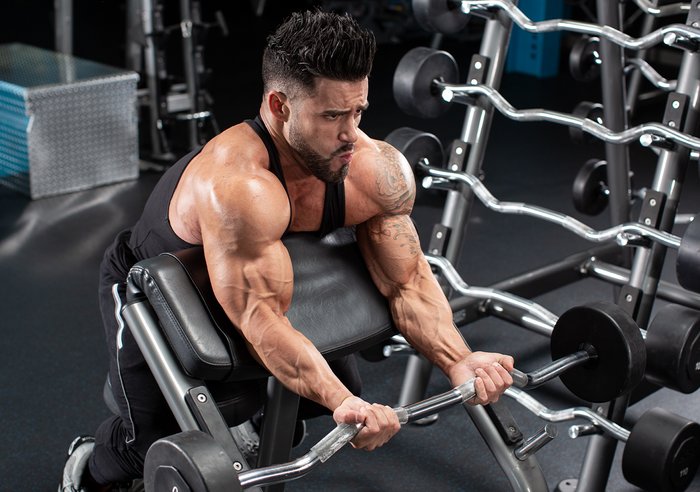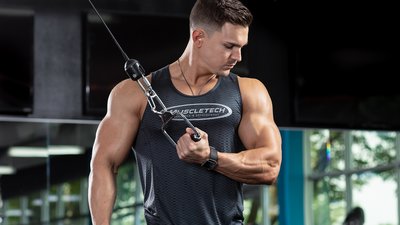Is it better to look good or be strong? Many people take up bodybuilding to look better, training to build and sculpt their physique rather than add functional strength. Strength athletes, on the other hand, train to lift heavy without worrying about what their muscles look like, because aesthetics simply isn't the top priority.
If you've ever found yourself caught between these two goals, you're not alone. Many bodybuilders tire of chasing aesthetics and transition to strength-based competitions, and many strength athletes enjoy the challenge of fine-tuning their physical appearance. It's rare to find an athlete who cares only about one or the other, because most of us want to build muscles that both show and go. Not only do we want to look stronger—we want to be stronger!
Here are the five best training tips to make both of these goals a reality.
Tip 1: Attack Your Weaknesses First
No one is perfect. We all have strengths, and we all have weaknesses. The problem is that many lifters boost their egos by working only on their strengths while ignoring their weaknesses. While in the short term this might work, neglecting what you need to work on most will bite you in the glutes in the long run.

If you want size and strength, acknowledge your weaknesses and tackle them first. If your upper chest is lagging, start with inclines. If one side is weaker than the other, work that side first and add a couple more reps. Not only will this approach help your physique, it also will help you mentally. Rather than ignoring your problems, you're attacking them. When your weak areas become stronger, your physique and performance will both improve.
Tip 2: Triple Down on Your Goals
Going as heavy as you can not only helps with power, it also adds density to your muscles. I'm not suggesting chasing PRs every week. Instead, use cluster sets to build size and strength safely.
Cluster sets are groups of 2-5 reps, where you lift a heavier-than-normal weight with extended rest-pauses in between. Work 3x3 clusters in your plan. This means doing 3 mini-sets of 3 reps with 20-25 seconds of rest in between. Triples are a good target rep range because you're going heavy but also doing multiple reps.
To add triples to your workout, choose a weight you can handle for 5 reps. Since you're clustering your reps, you'll be doing 9 reps instead of 5, so this weight will get heavy fast. Do two of these cluster sets with your major compound movement of the day, resting for around 2 minutes between cluster sets.

Tip 3: Control the Weight
How many lifters have you seen trying to sling weight around as fast as they can? My guess is many. You might even be thinking of someone specific when you read those words. While slinging weight might appear impressive to the gym rookie, the rest of us know it isn't very beneficial.
Being truly strong means you don't need tricks like momentum to lift weight. You're capable of controlling your lifts from start to finish. And from an aesthetics perspective, slow-and-controlled lifting increases the time your muscles spend under tension, leading to greater gains overall.
If you're guilty of using physics, not power, to lift, slow down and take back control. While there are a few rare occasions that cheating can help, those occasions are not when strength is the priority. If you have to use momentum instead of generating your own muscular force, you're already done with your set.

Tip 4: Get Positive by Going Negative
This is a follow-up on the previous tip, but also serves its own benefit. When you're training, you want to break those muscle fibers down so they can rebuild themselves bigger and stronger. Negatives—the part of the exercise where you are lowering the weight under control—not only reinforces good lifting mechanics, it also speeds up that breakdown process and builds better size and strength.
As you're finishing up your isolation exercises, devote your last set to focusing on the negative. Lift the weight with your normal tempo, then lower it to a five-count. You'll feel the muscles working throughout this entire period. Once you're at the bottom of the movement, lift the weight back up at a normal cadence for the next rep.
Tip 5: Redefine Your Approach
No matter how dedicated you are to your training, eventually you'll have to face the dreaded p-word: plateau. Sometimes training through a plateau feels like you're headbutting a wall, making it a lot harder to keep moving forward toward the same goal.
If you've hit a size or strength plateau, use it as an opportunity to take a step back and shift your focus to something new. If you're stuck on the back squat and can't even add 5 pounds or get past 10 reps, change it up and start using the front squat. If you can't seem to get your waist any smaller through diet and cardio, work on making your lats bigger to enhance that V-taper.
Taking a new approach when you hit a plateau means thinking of different ways to get what you want out of training. The more creative you can get, the better your chances of seeing improvements in both size and strength!

